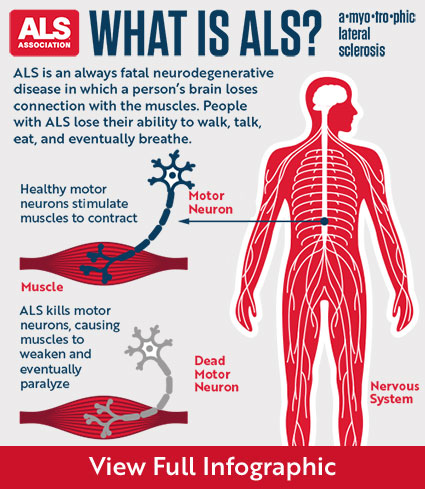About ALS
Just what is ALS?
ALS was first found in 1869 by French neurologist Jean-Martin Charcot, but it wasn’t until 1939 that Lou Gehrig brought national and international attention to the disease. Ending the career of one of the most beloved baseball players of all time, the disease is still most closely associated with his name. Amyotrophic lateral sclerosis (ALS) is a progressive neurodegenerative disease that affects nerve cells in the brain and the spinal cord. Motor neurons reach from the brain to the spinal cord and from the spinal cord to the muscles throughout the body. The progressive degeneration of the motor neurons in ALS eventually leads to their death. When the motor neurons die, the ability of the brain to initiate and control muscle movement is lost. With voluntary muscle action progressively affected, patients in the later stages of the disease may become totally paralyzed.
What is ALS?
In the summer of 2014, millions of people started talking about ALS. Keep the conversation going to increase understanding of the disease.

From Merriam-Webster Dictionary:
Main Entry: amyo·tro·phic lateral sclerosis
Pronunciation: "A-"mI-O-'trO-fik-, la-te-ral, skle-'rO-sis
\A\ as a in ace \I\ as i in ice \O\ as o in go
Click here to hear it pronounced
Function: noun
Etymology: 2a- + my- + -trophic
Date: circa 1889
: a rare progressive degenerative fatal disease affecting the spinal cord, usually beginning in middle age, and characterized especially by increasing and spreading muscular weakness -- called also Lou Gehrig's disease.
Here is one of the best presentations about ALS we've found so far: